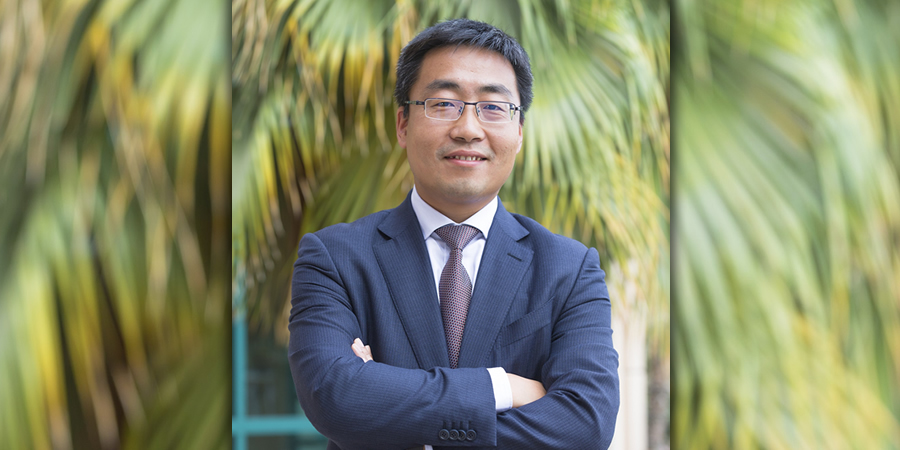By An Jian, president of carrier networks business group, Huawei Middle East
No industry can ignore the need for digitalization. The development of new technologies such as IoT, artificial intelligence, 5G and cloud computing has made data collection and value mining increasingly simple. These technologies are bringing benefits to every industry in which they have been adopted, but digitalization also poses new challenges, including the need for higher agility and flexibility from service applications. This places new demands on data infrastructure.
“Data + intelligence”: Redefining data infrastructures
Faced with the booming digital economy, Huawei has proposed the concept of "data + intelligence" to redefine data infrastructures. According to Zhou Yuefeng, vice president of Huawei IT product line and president of intelligent data and storage, the concept consists of four aspects:
- A diversification of computing power is needed to meet various computing demands of different types of data.
- Data access needs to be more intelligent to facilitate flexible and automatic access to various types of data.
- The boundaries of conventional storage architecture must be transcended in favor of greater convergence.
- A converged intelligent data-processing platform is connected to services so that services in the upper layer can be become a real-time source of data.
Moreover, Huawei's approach to redefining data infrastructure comprises three components:
- Cloud-based full convergence: Huawei has vertically integrated the software that stores and processes different types of data protocols with the upper-layer database. This provides users with a one-stop data processing solution, while STaaS and DaaS support the cloud-based development of enterprises.
- Automation: An automated data management system with a three-layer architecture greatly improves the efficiency of the interactions between cloud AI, center AI and device AI. This enables the storage system to automatically detect and rectify faults, and even orchestrate resources across regions, which improves efficiency and lowers costs for users.
- Affordable flash memory: With the development of semiconductor technologies, flash memory is on track to completely replace mechanical hard drives. As the all-flash era approaches, datacenters are undergoing a transformation. By optimizing algorithms and hardware architecture to fully leverage the innovations being made in semiconductor technology, Huawei strives to further improve the service life and reliability of flash memory. With optimized algorithms, more capacity can be provided, cutting investment in IT.
The next generation OceanStor Dorado V6 intelligent storage system
Dorado, a species of fish living in tropical and subtropical oceans, can swim at speeds of up to 130 km per hour, making it the fastest of all known sea creatures. It is for this reason that when Huawei launched its all-flash product series, we named it Dorado. This series of products has been widely accepted by the market due to its speed, efficiency, and stability.
Huawei's OceanStor Dorado V6 embodies Huawei's philosophy of "data + intelligence". It implements cloud-based full convergence, automation and affordable flash memory by taking full advantage of intelligent chips. It facilitates the construction of new data infrastructures, thanks to the high performance Kunpeng 920 chip, the reliability of the fully-interconnected SmartMatrix architecture and intelligent full-lifecycle management.
Recently, Huawei had launched OceanStor Dorado V6, the next generation intelligent storage system, adding a new member to the Dorado family. With the high performance Kunpeng 920 chip, the fully-interconnected, balanced and reliable SmartMatrix architecture, and intelligent full lifecycle management empowered by AI, this product will become the cornerstone of enterprises' data infrastructure and drive enterprises to upgrade services through its innovative capabilities of intelligent data storage.
Ultimate performance brought by 5 intelligent chips: Huawei proprietary chips are used across the board: transmission, computing, storage, management and intelligence. It is worth mentioning that the Kunpeng 920 chip is used to provide ultimate computing power, achieving quicker responses to real-time application requirements with 20 million IOPS and 0.1 ms in latency.
SmartMatrix, the new benchmark for reliability: SmartMatrix represents a major advance in failure tolerance. The fully-interconnected architecture means that the simultaneous failure of as many as seven controllers in a system will not cause service interruption. SmartMatrix sets a new benchmark for reliability in the data storage industry.
Automatic management enabled by three-layer interaction: The OceanStor Dorado V6 is the industry's first intelligent storage system to have AI chips built-in. The Ascend A310 chip provides AI capabilities, improving the read cache hit ratio by 50%. The OceanStor DJ AI engine automates full-lifecycle management of data, covering planning, deployment, allocation, O&M, and optimization, based on monitoring and multiple data sources. Enterprise O&M difficulties are solved with eService acting as the brain in the cloud and big data analysis performed in the public cloud.
OceanStor Dorado V6 is not just a storage system; it provides both SAN and NAS solutions. It implements vertical convergence by integrating Huawei-developed databases and storage systems. OceanStor Dorado V6 is a new storage system that features affordable flash memory, automation and cloud-based full convergence.
I believe that the industry will bid farewell to the mechanical era and the development of intelligent infrastructures will be accelerated.









